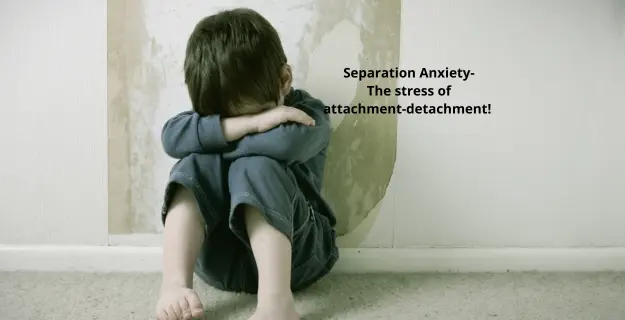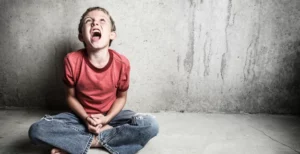Have you ever observed children journeying from merrily cooing to crying at their wits end because of unknown people and places? As a parent, have you ever observed your baby responding happily to you or a family member and suddenly feeling fearful of strangers?
All children and teens feel some anxiety. It is a normal part of growing up. But, it could need professional intervention if it crosses the natural threshold.
A child is communicating when he/she is crying out loud, is being clingy, is holding you tight, breathing heavily, or crying uncontrollably. Children respond in their own ways. It is necessary to deal with them wisely and interpret these messages.
But why, what really happens?
It’s a very important developmental milestone and completely healthy. All children between the ages of 18 months and 3 years old experience separation issues and are clingy to some degree. Most children outgrow by 3, by the time they reach preschool. Children experience these intense anxieties as they are yet to learn about detachment. They are attached to the primary caregivers for varied different daily survival activities and chores. The dependence is physical, emotional, mental, and sentimental. Once a caregiver leaves their sight, they experience intense fear as they are still learning that these separations are only temporary. It is upsetting, they long for a safe and secure environment. They feel triggered by absence, discomfort, new environments, new people, and new experiences.
What does it look like?
It is easy to spot actually. Children become more clingy when you are about to leave them, crying or clinging in new situations (primarily from 6 months to 3 years), refusing to go to sleep without a parent or another caregiver nearby, and beginning to cry at night after being able to sleep through the night.
Separation Anxiety Disorder (SAD) is a diagnosed condition and has more severe symptoms. It is important to carefully use the diagnostic terms and consciously avoid labeling.
Elder children exhibit physical symptoms, not wanting to be home alone, not wanting to go without adult support, and fear of losing a closed one or a parent.
What to do?
A major part of dealing with this phase is about listening, smooth transitioning, and helping children build coping skills.
1. Prepare! Prepare! No surprises, please!!
Young children are not huge fan of surprises. Prepare them in advance with respect to what to expect? What is really going to happen? How will it be? Where would you be? Who will be there? What to do? Talk about the change in the routine, mention the things that would be present and available, and stress less about what would be missed. It would help them to ease their stress.
2. Be okay, with every emotion!
There is a sheer possibility that you would stress out by their constant clinginess or repetitive hard emotions. It could be stressful and hard to be patient all the time. But, they are purely struggling and trying hard to communicate. Being sensitive, waiting for the phase to slide down, letting them cry, and scream, and allowing them to share distress is the first step. Being accepting is important. Reinforce bonds, and provide security. Remind them that they are loved!
3. Practice what you preach!
Build trust through consistency. Don’t sneak away while your child is distracted, even if that makes saying goodbye harder. It’s important that they know they can trust you to say goodbye and return later. Keep them informed.
4. Involve children, Build patience!
Children are adaptive and accommodative. Once they are acquainted with the new routine, separations should get easier. Involve them during decision-making. Ask them how they are feeling about it.
5. Involve people, seek help!
Involve other stakeholders in making the child feel comfortable in their new setting. Ensure safety and security. Let the child be around people he. she can trust and is acquainted with. Try to simplify situations for children.
Know that it’s hard, know that it is difficult even for an adult to adjust to new scenarios! It’s just we might have tools to survive and children don’t, They are trying to build their own tools to survive. All we have to do is support, guide, and embrace their state of mind which is complex and natural.
Being heard is the best way to deal!
Cheers,
Happy Parenting






Very true!